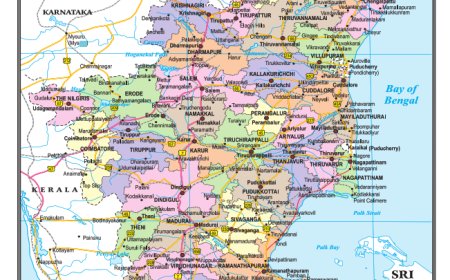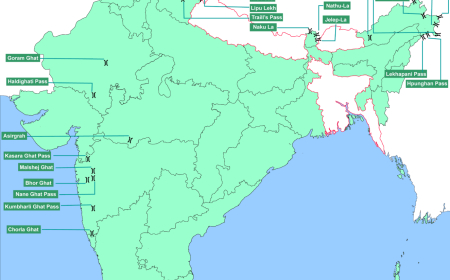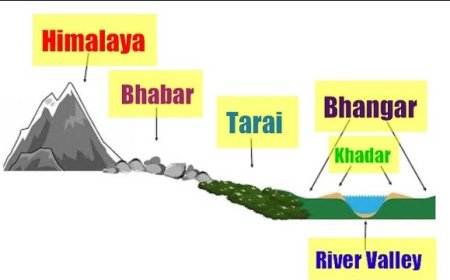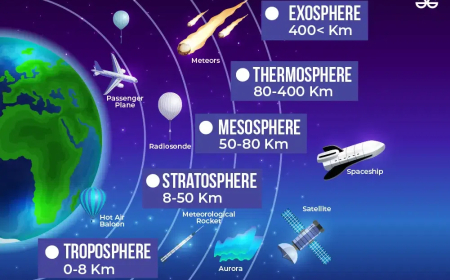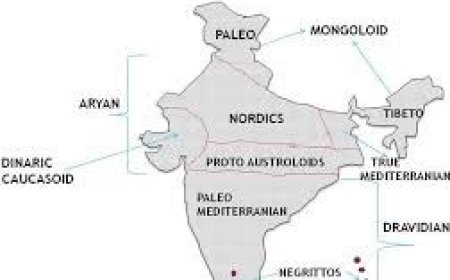Climate Change
climate-change-post
Triggers of Climate Change
- Climate change can be attributed to several causes. The most significant human-induced factor is the increasing concentration of greenhouse gases in the atmosphere.
- These causes can be broadly categorized into two types:
- Astronomical causes
- Activities related to sunspots
- Millankovitch cycles
- Terrestrial causes
- Volcanic activities
- Accumulation of greenhouse gases
- Astronomical causes
- Astronomical factors include variations in solar energy linked to sunspot activities.
- Sunspots are cooler, darker patches on the sun that fluctuate in a cyclical manner.
- An increase in sunspots correlates with cooler and wetter weather conditions and increased storm activity.
- These activities influence the amount of insolation (incoming solar radiation) received from the sun, which could impact the climate.
- Millankovitch cycles refer to changes in the earth’s orbital characteristics around the sun, the wobbling of the earth, and shifts in the earth’s axial tilt. These cycles can alter the amount of insolation received from the sun, potentially affecting the climate.
- Volcanic activities are also considered a significant factor in climate change.
- Volcanic eruptions release a vast amount of aerosols into the atmosphere.
- These aerosols can linger in the atmosphere for a long time, reducing the amount of solar radiation reaching the Earth's surface.
- The main greenhouse gases include Chlorofluorocarbons (CFCs), Methane (CH 4 ), Nitrous oxide (N 2 O), Carbon dioxide (CO 2 ), and Ozone (O 3 ).
- Certain gases like nitric oxide (NO) and carbon monoxide (CO) can react with greenhouse gases, altering their concentration in the atmosphere.
- The most abundant greenhouse gas in the atmosphere is carbon dioxide.
Indicators of Climate Change
- Rising sea levels
- Increase in global temperatures
- Warming of oceans
- Reduction in ice sheets
- Decline in Arctic sea ice
- Retreat of glaciers
- Frequent and severe natural disasters
- Acidification of oceans
- Diminishing snow cover
Mitigation
-
Cleaner alternative energy sources: One important way to fight climate change is to reduce our reliance on and usage of fossil fuels and depend on alternative renewable and greener sources of energy such as wind energy, solar energy, water or hydropower, biomass, and geothermal energy.
-
Energy saving tips: We can adopt energy-saving tips by investing in more expensive energy-saving appliances like compact fluorescent light (CFL) bulbs, air conditioners, refrigerators, etc. Additionally, switching off electrical appliances when not in use can significantly reduce energy consumption.
-
Green driving tips: The best strategy to reduce toxic gas emissions is to reduce the use of automobiles. Utilizing public transport, carpooling, and using electricity-powered cars or two-wheelers can be effective alternatives.
-
Reduce - Reuse - Recycle practices: Reducing, reusing, and recycling help us conserve resources and energy, and reduce pollution and greenhouse gas emissions.
-
Re-forestation: The cleanest and most efficient remover of carbon dioxide from our atmosphere is green plants and trees. The rate at which we are cutting down our trees and forests to make way for human developments has greatly reduced the earth’s ability to remove carbon dioxide from the atmosphere.
- Organic farming: Soils are an important sink for atmospheric carbon dioxide. However, deforestation to make way for conventional agriculture is increasingly depleting this sink. Sustainable and organic agriculture helps to counteract climate change by restoring soil organic matter content, reducing soil erosion, and improving soil physical structure. Organic farming uses natural fertilizers and helps maintain crop yields.
Adaptation
Adaptation means anticipating the adverse effects of climate change and taking appropriate action to prevent or minimise the damage they can cause. Some of the examples of adaptation practices are – new building codes to adapt future climate change, developing drought tolerant crops and setting aside land corridors to help species migrate.
Why does climate change adaptation necessary?
Global warming as a result of Climate change has increased the vulnerability of social and biological systems to relatively sudden change. These changes will last many years. So, climate change adaptation is necessary to offset the effects of global warming.
Adaptation strategies are needed at all levels of administration to make them more effective. Successful adaptation not only depends on governments but also on the active and sustained engagement of stakeholders including national, regional, multilateral and international organizations.
How is Adaptation different from Mitigation?
Mitigation is an intervention to reduce the emissions sources or enhance the sinks of greenhouse gases.
Adaptation and mitigation present some notable differences, particularly in their objectives. Mitigation addresses the causes of climate change (accumulation of greenhouse gases in the atmosphere), whereas adaptation addresses the impacts of climate change.
Global Initiatives- UNFCCC- India's INDC- Panchamrita
United Nations Framework Convention on Climate Change (UNFCCC).
The UNFCCC, signed in 1992 at the United Nations Conference on Environment and Development also known as the Earth Summit, the Rio Summit or the Rio Conference
Paris Agreement
To address climate change, countries adopted the Paris Agreement at the COP21 in Paris on 12 December 2015. The Agreement entered into force shortly thereafter, on 4 November 2016. In the agreement, all countries agreed to work to limit global temperature rise to well below 2°C, and given the grave risks, to strive for 1.5°C.
India's INDC
-
To put forward and further propagate a healthy and sustainable way of living based on traditions and values of conservation and moderation, including through a mass movement for ‘LIFE’– ‘Lifestyle for Environment’ as a key to combating climate change [ UPDATED].
-
To adopt a climate friendly and a cleaner path than the one followed hitherto by others at corresponding level of economic development.
-
To reduce Emissions Intensity of its GDP by 45 percent by 2030, from 2005 level [UPDATED].
-
To achieve about 50 percent cumulative electric power installed capacity from non-fossil fuel-based energy resources by 2030, with the help of transfer of technology and low-cost international finance including from Green Climate Fund (GCF) [UPDATED].
-
To create an additional carbon sink of 2.5 to 3 billion tonnes of CO2 equivalent through additional forest and tree cover by 2030.
-
To better adapt to climate change by enhancing investments in development programmes in sectors vulnerable to climate change, particularly agriculture, water resources, Himalayan region, coastal regions, health and disaster management.
-
To mobilize domestic and new & additional funds from developed countries to implement the above mitigation and adaptation actions in view of the resource required and the resource gap.
-
To build capacities, create domestic framework and international architecture for quick diffusion of cutting edge climate technology in India and for joint collaborative R&D for such future technologies.
(Panchamrit) of India’s climate action:
- Reach 500GWNon-fossil energy capacity by 2030.
- 50 per cent of its energy requirements from renewable energy by 2030.
- Reduction of total projected carbon emissions by one billion tonnes from now to 2030.
- Reduction of the carbon intensity of the economy by 45 per cent by 2030, over 2005 levels.
- Achieving the target of net zero emissions by 2070.
L, I, F, E, i.e. Lifestyle For Environment.
The vision of LIFE is to live a lifestyle that is in tune with our planet and does not harm it. India’s updated NDC also captures this citizen centric approach to combat climate change.
Tamil Nadu Green Climate Company
- The State government accorded permission to establish the Tamil Nadu Green Climate Company.
- It is a Special Purpose Vehicle (SPV), to implement three key missions.
- They are
- Tamil Nadu Climate Change Mission
- The Green Tamil Nadu Mission and
- The Tamil Nadu Wetlands Mission.
Objective
- Plan, execute, and monitor State-wide programmes for climate change adaptation and mitigation.
- Wetlands mapping and restoration.
- Enhancing forest and tree cover of the State to 33 per cent over the next 10 years.
What's Your Reaction?







